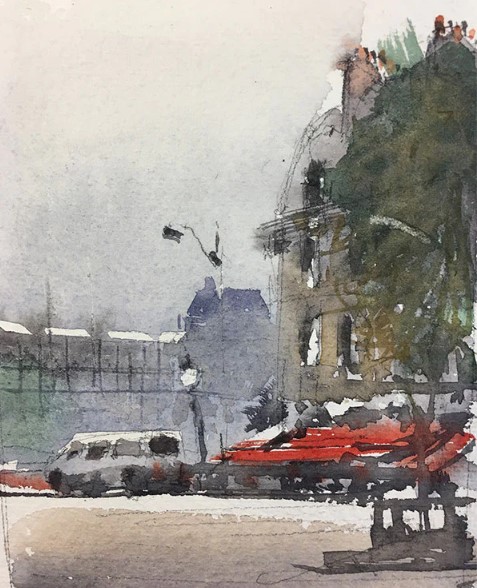By Stewart White

Planning does two things. It helps the artist avoid “getting trapped.” By that I mean, there are times that one cannot go back and fix hastily painted areas of work. Light areas and clean washes need to be laid down with confidence that comes from having a good plan and preparation.
Secondly, planning can result from doing small “dress rehearsals” in a 6 × 8-inch square or even a postage stamp-sized sketch. That is where revisions and cautions can be discovered prior to executing the final work and measures can be taken to avoid calamity.
Without planning there is a lack of focus, a lack of light, and a lack of idea development.

PLUS, WHY YOU NEED TO PLAN YOUR EDGES
Edges create depth in a picture. They recede or come forward depending on the quality of their edges. Edges in a shadow compete with the depth of that shadow. The fewer edges within a shadow, the more focus is given to the light that that shadow expresses.

In watercolor, your edges are key. When transitioning from shade to shade or color to color, soft edges can delight the eyes with the effects it can create. The student must plan for opportunities to exploit this wonderful quality of the medium. Lost and found edges are one of watercolor’s strong suits. The range of depth is as striking as a strong dry stroke of color on a soft wash and the subtle haziness of trees in a distant fog. Chinese scroll painting, besides its mastery of mark-making with the brush, is best known for the illusions created by edge control.
Before he became a full-time artist, Baltimore watercolor painter Stewart White worked as an architectural illustrator and designer. Follow along as he shares his deep knowledge of painting buildings and good design in “Painting Architecture in Watercolor”.







